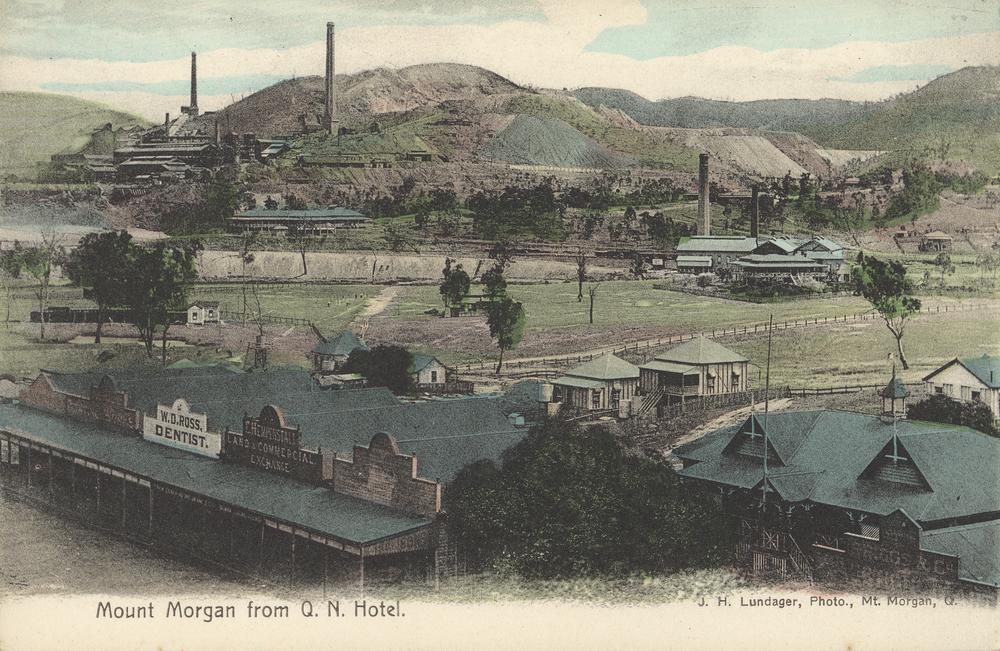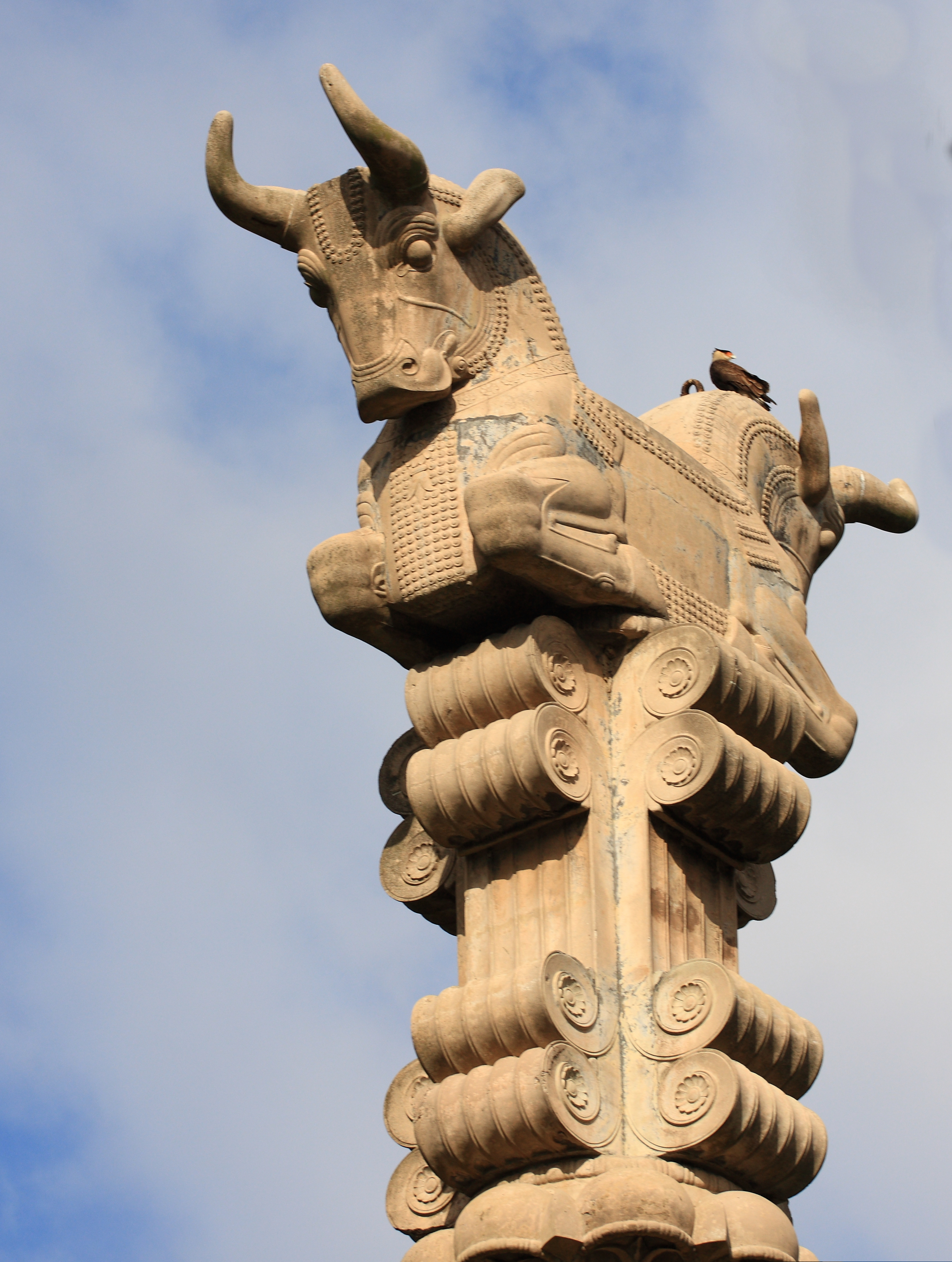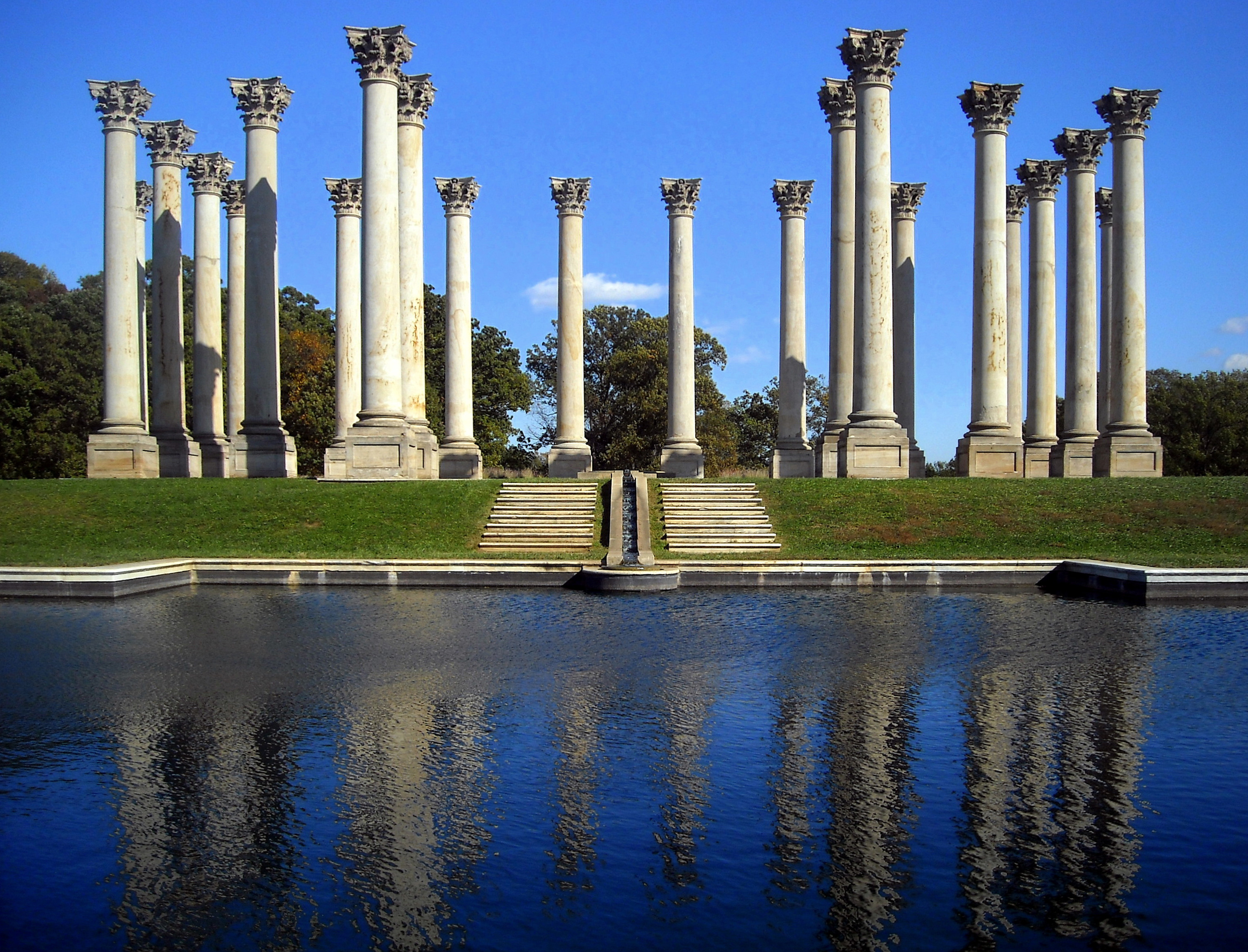|
Trustee Chambers
Trustee Chambers is a heritage-listed former house and subsequent commercial building at 170 Quay Street, Rockhampton, Rockhampton Region, Queensland, Australia. It was designed by architect John William Wilson and built from 1876 to 1877. It is also known as Residence of Dr William Callaghan and River Chambers. It was added to the Queensland Heritage Register on 21 October 1992. History Trustee Chambers is a two storeyed masonry building, built in 1877 in Quay Street, Rockhampton as the private residence of Dr William Callaghan house surgeon for the Rockhampton Hospital. It was designed by John William Wilson and was the most expensive private contract for the design of a building carried out by Wilson. It has been used since 1919 as professional offices, and since 1950 has been the offices of the Union Trustee Company. The Archer brothers had made a private expedition to the Rockhampton district in 1853, and were the first Europeans to record and chart the Fitzroy River. ... [...More Info...] [...Related Items...] OR: [Wikipedia] [Google] [Baidu] |
Rockhampton, Queensland
Rockhampton is a city in the Rockhampton Region of Central Queensland, Australia. The population of Rockhampton in June 2021 was 79,967, Estimated resident population, 30 June 2018. making it the fourth-largest city in the state outside of the cities of South East Queensland, and the 22nd-largest city in Australia. Today, Rockhampton is an industrial and agricultural centre of the north, and is the regional centre of Central Queensland. Rockhampton is one of the oldest cities in Queensland and in Northern Australia. In 1853, Charles and William Archer came across the Toonooba river, which is now also known as the Fitzroy River, which they claimed in honour of Sir Charles FitzRoy. The Archer brothers took up a run near Gracemere in 1855, and more settlers arrived soon after, enticed by the fertile valleys. The town of Rockhampton was proclaimed in 1858, and surveyed by William Henry Standish, Arthur F Wood and Francis Clarke, the chosen street design closely resembled the ... [...More Info...] [...Related Items...] OR: [Wikipedia] [Google] [Baidu] |
Mount Morgan Mine
Mount Morgan Mine was a copper, gold and silver mine in Queensland, Australia. Mining began at Mount Morgan in 1882 and continued until 1981. Over its lifespan, the mine yielded approximately of gold, of silver and of copper. The mine was once the largest gold mine in the world. The Mount Morgan Mine also operated assay laboratories, brickworks, foundry, power house and workshops (including carpentry, electrical and plumbing) as part of its operations. The Mount Morgan Mine also contained Fireclay Caverns excavated to provide clay for the mine brickworks. Wealth from the Mount Morgan mine funded Persian oil exploration, establishing the Anglo-Persian Oil Company, which became BP in 1954. Wealth from the Mount Morgan mine was also bequeathed in 1912 to establish the Walter and Eliza Hall Institute of Medical Research. Resources The area near the mine contains sedimentary and igneous rocks. The gold was rated 0.998 fine. History The Beginning (1882 to 1886) In 188 ... [...More Info...] [...Related Items...] OR: [Wikipedia] [Google] [Baidu] |
Wrought Iron
Wrought iron is an iron alloy with a very low carbon content (less than 0.08%) in contrast to that of cast iron (2.1% to 4%). It is a semi-fused mass of iron with fibrous slag inclusions (up to 2% by weight), which give it a wood-like "grain" that is visible when it is etched, rusted, or bent to failure. Wrought iron is tough, malleable, ductile, corrosion resistant, and easily forge welded, but is more difficult to weld electrically. Before the development of effective methods of steelmaking and the availability of large quantities of steel, wrought iron was the most common form of malleable iron. It was given the name ''wrought'' because it was hammered, rolled, or otherwise worked while hot enough to expel molten slag. The modern functional equivalent of wrought iron is mild steel, also called low-carbon steel. Neither wrought iron nor mild steel contain enough carbon to be hardenable by heating and quenching. Wrought iron is highly refined, with a small amount of silic ... [...More Info...] [...Related Items...] OR: [Wikipedia] [Google] [Baidu] |
Capital (architecture)
In architecture the capital (from the Latin ''caput'', or "head") or chapiter forms the topmost member of a column (or a pilaster). It mediates between the column and the load thrusting down upon it, broadening the area of the column's supporting surface. The capital, projecting on each side as it rises to support the abacus, joins the usually square abacus and the usually circular shaft of the column. The capital may be convex, as in the Doric order; concave, as in the inverted bell of the Corinthian order; or scrolling out, as in the Ionic order. These form the three principal types on which all capitals in the classical tradition are based. The Composite order established in the 16th century on a hint from the Arch of Titus, adds Ionic volutes to Corinthian acanthus leaves. From the highly visible position it occupies in all colonnaded monumental buildings, the capital is often selected for ornamentation; and is often the clearest indicator of the architectu ... [...More Info...] [...Related Items...] OR: [Wikipedia] [Google] [Baidu] |
Doric Order
The Doric order was one of the three orders of ancient Greek and later Roman architecture; the other two canonical orders were the Ionic and the Corinthian. The Doric is most easily recognized by the simple circular capitals at the top of columns. Originating in the western Doric region of Greece, it is the earliest and, in its essence, the simplest of the orders, though still with complex details in the entablature above. The Greek Doric column was fluted or smooth-surfaced, and had no base, dropping straight into the stylobate or platform on which the temple or other building stood. The capital was a simple circular form, with some mouldings, under a square cushion that is very wide in early versions, but later more restrained. Above a plain architrave, the complexity comes in the frieze, where the two features originally unique to the Doric, the triglyph and gutta, are skeuomorphic memories of the beams and retaining pegs of the wooden constructions that preceded sto ... [...More Info...] [...Related Items...] OR: [Wikipedia] [Google] [Baidu] |
Columns
A column or pillar in architecture and structural engineering is a structural element that transmits, through compression, the weight of the structure above to other structural elements below. In other words, a column is a compression member. The term ''column'' applies especially to a large round support (the shaft of the column) with a capital and a base or pedestal, which is made of stone, or appearing to be so. A small wooden or metal support is typically called a '' post''. Supports with a rectangular or other non-round section are usually called '' piers''. For the purpose of wind or earthquake engineering, columns may be designed to resist lateral forces. Other compression members are often termed "columns" because of the similar stress conditions. Columns are frequently used to support beams or arches on which the upper parts of walls or ceilings rest. In architecture, "column" refers to such a structural element that also has certain proportional and decorativ ... [...More Info...] [...Related Items...] OR: [Wikipedia] [Google] [Baidu] |
Awning
An awning or overhang is a secondary covering attached to the exterior wall of a building. It is typically composed of canvas woven of Acrylic fiber, acrylic, cotton or polyester yarn, or vinyl laminated to polyester fabric that is stretched tightly over a light structure of aluminium, iron or steel, possibly wood or transparency and translucency, transparent material (used to cover solar thermal panels in the summer, but that must allow as much light as possible in the winter). The configuration of this structure is something of a truss, space frame or planar Framing (construction), frame. Awnings are also often constructed of aluminium understructure with aluminium sheeting. These aluminium awnings are often used when a fabric awning is not a practical application where snow load as well as wind loads may be a factor. The location of an awning on a building may be above a window, a door, or above the area along a sidewalk. With the addition of columns an awning becomes a Canopy ... [...More Info...] [...Related Items...] OR: [Wikipedia] [Google] [Baidu] |
William Knox D'Arcy
William Knox D'Arcy (11 October 18491 May 1917) was a British businessman who was one of the principal founders of the oil and petrochemical industry in Persia (Iran). The D’Arcy Concession was signed in 1901 and allowed D'Arcy to explore, obtain, and market oil, natural gas, asphalt, and ozokerite in Persia. Early life He was born in Newton Abbot, Devon, England and was the son of a solicitor. He attended Westminster School until 1866, when the family emigrated to Australia following his father's bankruptcy, settling in Rockhampton, Queensland. D'Arcy continued his studies and chose to follow law, later joining his father's business. He did well and began to speculate, initially in land. He married Elena Birkbeck of Rockhampton at St Patrick's Cathedral, Parramatta on 23 October 1872. Elena was born in Mexico in 1840, the only daughter of Damiana de Barre Valdez and Samuel Birkbeck, a mining engineer from Illinois in the United States, who was in Mexico managing a silver ... [...More Info...] [...Related Items...] OR: [Wikipedia] [Google] [Baidu] |
Daily Northern Argus
''The Evening News'' was a newspaper published in Rockhampton, Queensland, Australia. History This newspaper commenced on 3 January 1863 as the ''Northern Argus''. It was published three times a week by Arthur Leslie Bourcicault. The editor was William Herbert Robison. From 1 January 1875, it was published as the ''Daily Northern Argus''. It was published daily by Arthur Leslie Bourcicault. The editor was Francis Hodgson Nixon. From 2 January 1897, it was merged with the ''Record'' and was published as the ''Daily Record''. From 31 July 1922, it was published as ''The Evening News''. The publisher was Walter Sewell Buzacott. The last issue was on 31 July 1941. Digitisation The paper has been digitised as part of the Australian Newspapers Digitisation Program of the National Library of Australia The National Library of Australia (NLA), formerly the Commonwealth National Library and Commonwealth Parliament Library, is the largest reference library in Australia, responsib ... [...More Info...] [...Related Items...] OR: [Wikipedia] [Google] [Baidu] |
Rockhampton School Of Arts
Rockhampton School of Arts is a heritage-listed former school of arts at 230 Bolsover Street, Rockhampton City, Rockhampton, Rockhampton Region, Queensland, Australia. It was designed by William (Walter) Cherry built in 1894 by Walter Adam Lawson. It is also known as Rockhampton Regional Library and Rockhampton Municipal Theatre. It was added to the Queensland Heritage Register on 21 October 1992. History The Rockhampton School of Arts building was built in 1894 and is an important element of the streetscape of Bolsover Street in Rockhampton. The building is a fine example of late nineteenth century Victorian Classical architecture. It has formed a major part of the cultural, social and civic life of Rockhampton since 1894, and has associations with a previous school of arts building that existed on the site from 1865. The School of Arts building is evidence of the growth of the City of Rockhampton, and is a reflection of the confidence, drive and energy of the citizens in ... [...More Info...] [...Related Items...] OR: [Wikipedia] [Google] [Baidu] |
Yaamba, Queensland
Yaamba is a rural town and locality in the Livingstone Shire, Queensland, Australia. In the , the locality of Yaamba had a population of 62 people. Geography Yaamba is bounded by the Fitzroy River to the south and by its tributary Alligator Creek to the east. The town is in the south of the locality beside the river. The Bruce Highway enters the locality from the east ( Milman) where it is locally known as Yaamba Road. It passes to the immediate north of the town, after which it is locally known as Kunwarara Road, and exits to the west (Canoona). The North Coast railway line also passes through the locality from east to west, roughly parallel and north of the highway. The town is served by Yaamba railway station (). The land is predominantly used for grazing. There are two clusters of housing in the town, one cluster is around the highway and railway station; the other is further south nearer the river. History The Darumbal (Tarumbul, Tharoombool) language region ... [...More Info...] [...Related Items...] OR: [Wikipedia] [Google] [Baidu] |







_(2002).jpg)